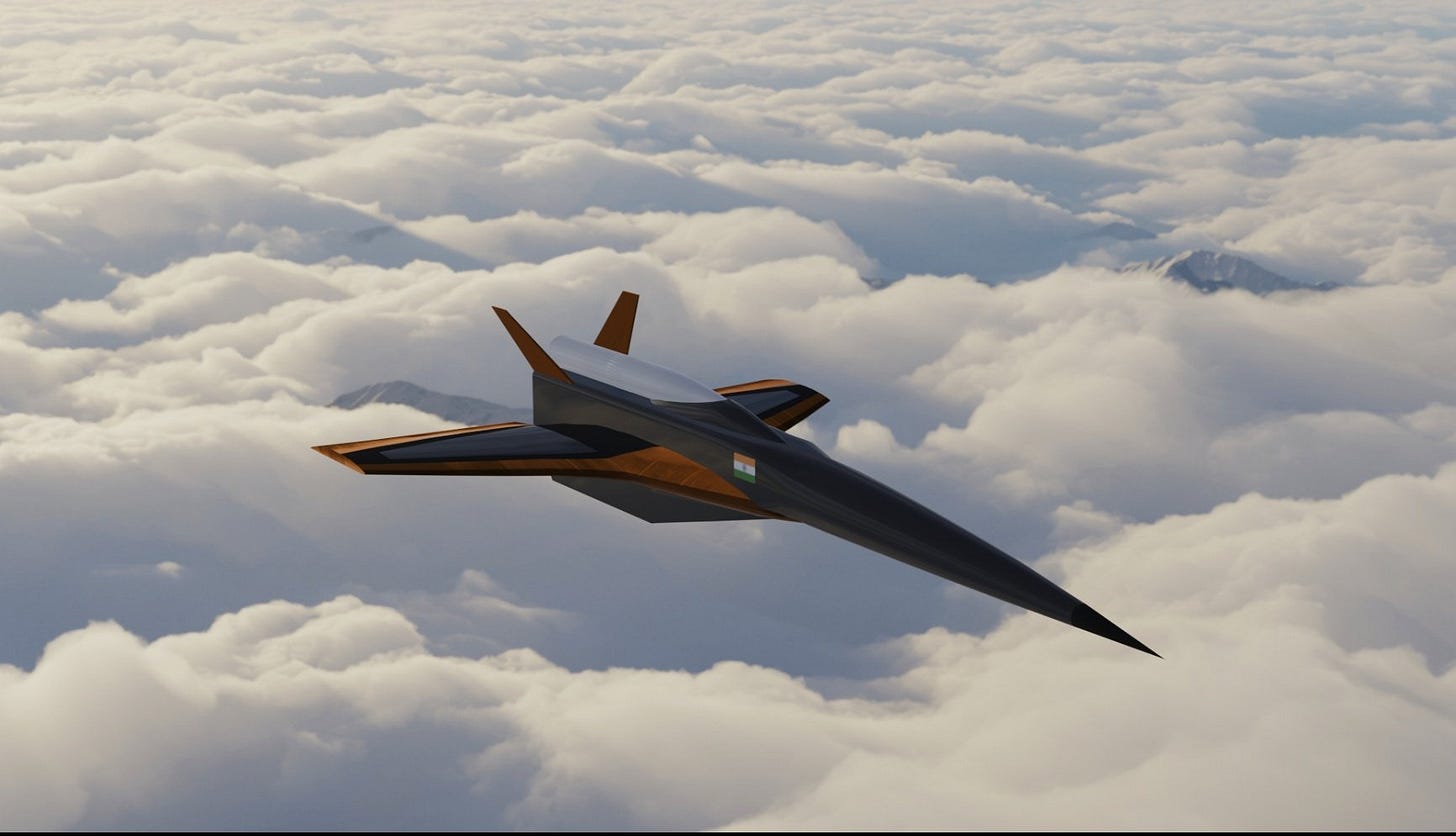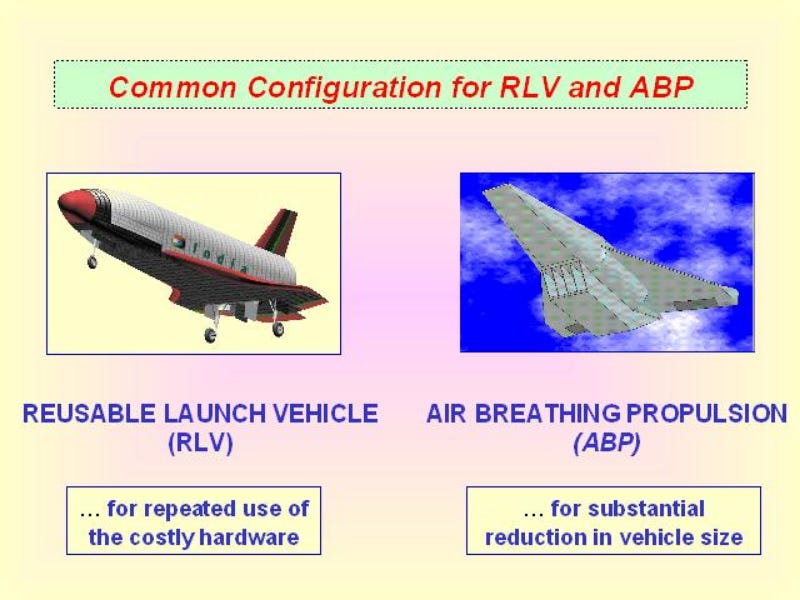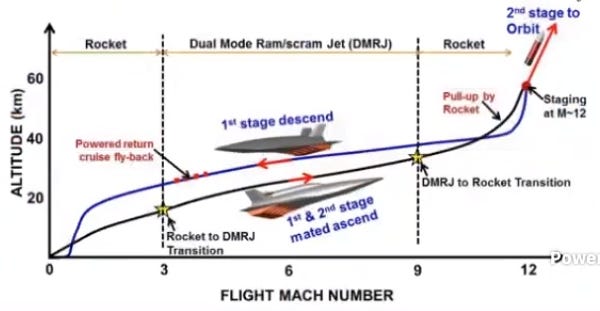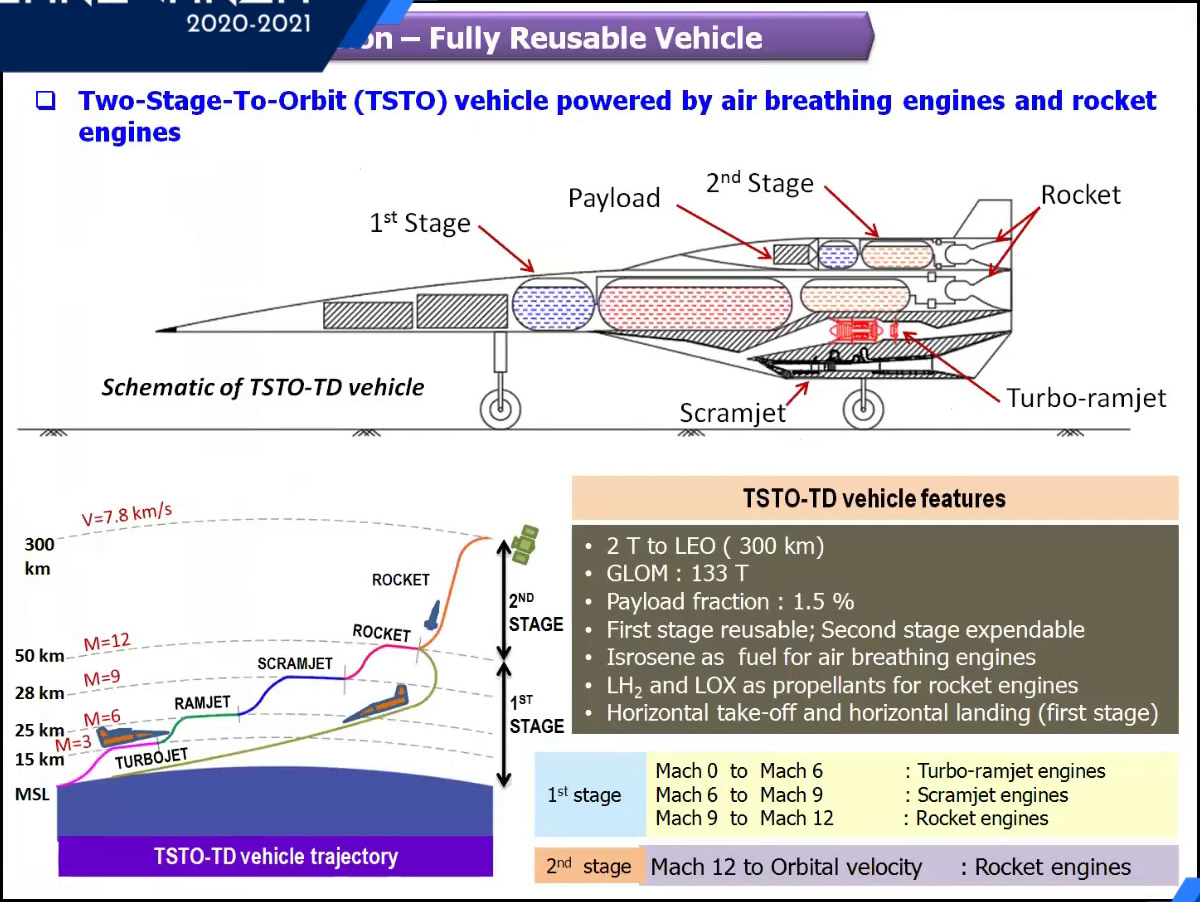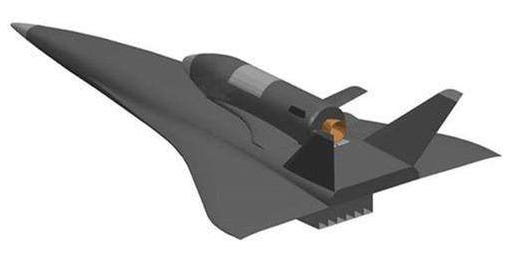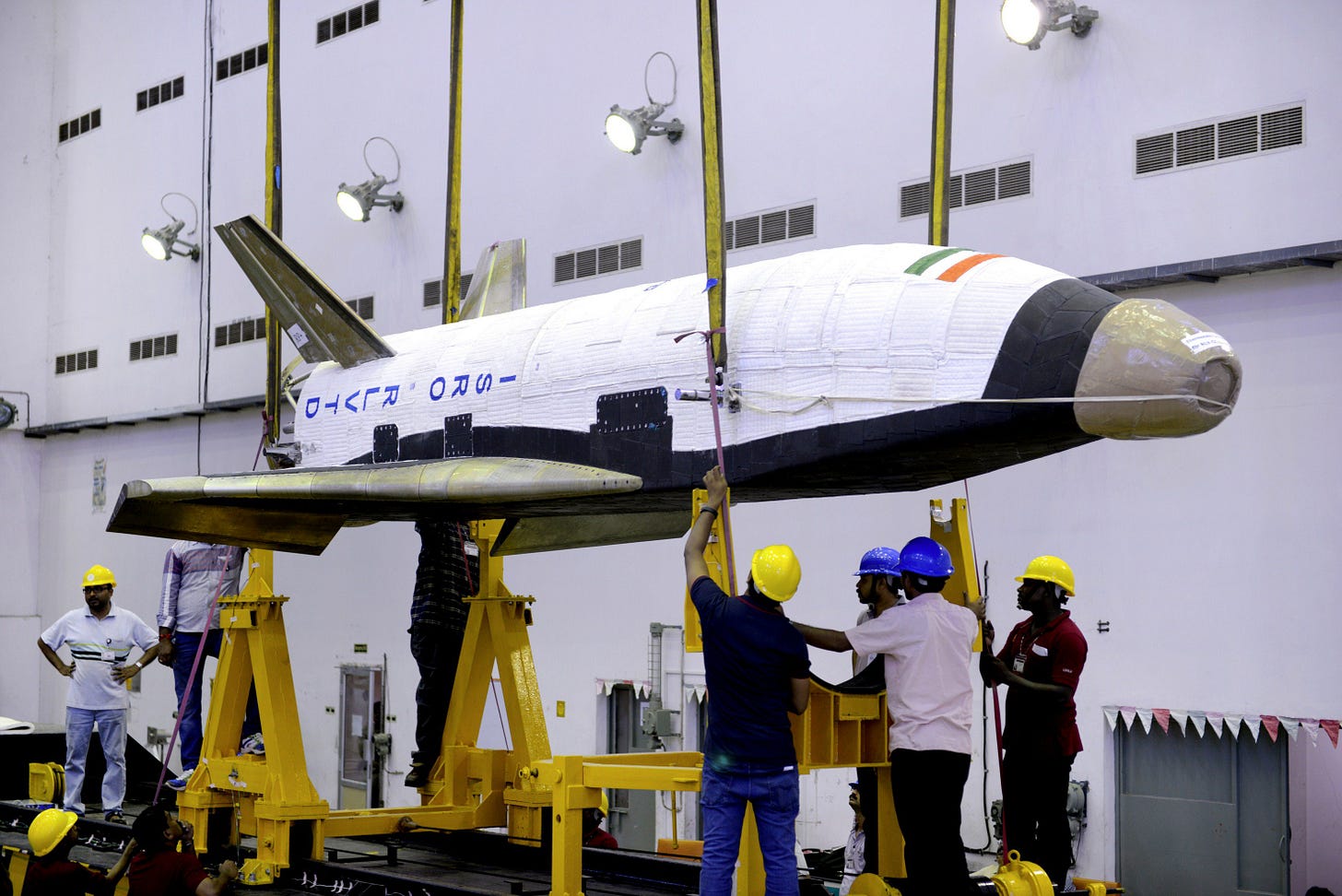It can be said beyond doubt that space exploration has hit Space-race era-like momentum in recent years fueled mostly by the entry of disruptive tech like SpaceX’s reusability-centric launch services. Agencies which relied mostly on the extra money they could cash in from launch services are facing a crisis at this time. ROSCOSMOS, once the sole agency to send astronauts to ISS, is in a tough spot due to SpaceX’s Crew Dragon chewing in on their piece of the pie.
ISRO, in near future, would face the same crisis as users are now eyeing private launch service providers. The agency has already started works on some really exciting systems in the past few years like Falcon-9 like landing tech for reusable rockets, and few spaceplane projects like RLV (Re-usable Launch Vehicle) - for which evaluation is currently being done on a scaled-down tech demonstrator and HAVA - ISRO’s hypersonic scramjet testing vehicle. We knew of a possible Air Breathing Two-Stage-To-Orbit (AB TSTP), that uses a mix of air-breathing engines and rocket motors, being studied and now we know more about the program with key technical specs about the vehicle revealed couple of days ago.
More about ISRO’s AB-TSTO concept
While the concept may seem new to many, ISRO has been toying with the idea for more than a decade now. In 2007, a presentation on the future of Space Transportation Systems by Dr. B. N. Suresh, Director of VSSC gave the hint that ISRO was looking towards air-breathing propulsion for their future launch vehicles.
ISRO has been conducting studies on Dual Mode Ramjet (DMRJ) - a ramjet engine which could work as a scramjet above Mach 6, was studied upon during 1989-1992 using the ABR-200 series soundign rockets. Later, in 2010 and 2016, ISRO conducted flight tests of the scramjet engine to evaluate and further refine the air-breathing propulsion technology. When matured, this tech is thought to be integrated into the RLV and AB-TSTO program, both of which is thought to merge overtime.
After a period of dormancy, AB-TSTO was once again pushed into limelight during the 2019 AeroIndia, when Dr. A. S. Kiran Kumar talked about the Indian Space Program’s progress. The flight profile and a crude design of the system broke cover, which revealed a rocket-assisted air-breathing two-staged launch vehicle.
This concept had a rocket assisted takeoff of the vehicle, which used the rocket engine aboard the 2nd stage mated to the 1st stage vehicle for powered ascent. After attaining the required altitude and velocity (M = 3 for the DMRJ to start functioning), the DMRJ kicked in (the rocket would stop firing now), propelling the vehicle to a hypersonic speeds of nearly Mach 9. The rocket engine would pull the whole assembly into a steep climb for the second stage - a rocket based stage carrying the payload, to separate from the winged craft, which would initiate a powered return and finally a cruised fly-back.
The concept prompts many questions like:
How exactly would the system initiate the launch? Is it a HOTOL (Horizontal Takeoff & Landing) like concept which the Brits worked on during the 80s? Or would it be carried aboard a trasnport aircraft and released from an altitude?
Since the rocket stage is firing twice during the whole course of the mission, and that too with a no-firing period in between, the rocket stage should be a throttleable engine. So, a hypergolic or LH2/LOX engine? Hypergols are extremely damgerous to work with and a cryogenic stage would seem more logical for its better performance.
New details emerge
Much of this queries can be laid to rest now with new details emerging giving us a better picture of the technology. The details were revealed during by Dr. S Somanath, Director of VSSC, during a presentation on May 09th, 2021.
The concept has taken a new turn with some major changes when compared with the 2019 presentation.
Size: GLOM (Gross Lift-Off Mass) is pegged at 133T which is a pretty huge number. It can be said with surety that the vehicle when realized would size up to or even bigger than the Space Shuttles operated by NASA.
Configuration: The system would be composed of two vehicles (i) First stage: a carrier vehicle propelled by the air-breathing engines and (ii) Second stage: a rocket powered stage which would carry the payload into orbit.
Propulsion: This is where it gets interesting. VSSC/ISRO has taken a very interesting turn from the 2019 concept. While the earlier model used rocket to initiate take-off, the 2021 concept is put-forwarding a radical turbo-ramjet engine for take-off!
Such an engine would act as a turbojet on low speeds (M<3) and would start working as a ramjet from Mach 3. SABRE and ATREX are examples of such combined turbo-ramjet engines, the former of which is thought to be used for the British Skylon spaceplane which is under development.
This is the possibly the first time any agency in India is hinting at developing a combined turbo-ramjet engine, which has been studied by NASA as a potential propulsion unit for air-breathing hypersonic vehicles during the 70s. The slide also explains that the air-breathing engines would be using ISROsene, an ISRO developed rocket-grade kerosene fuel. While the schematic shows the first stage carrying three tanks of propellant, the piping lines shows no connection to the air-breathing engines which is quite confusing.
Another change from the 2019 concept is the absence of DMRJ and instead, Stage 1 houses a separate scramjet engine to enable the spacecraft to achieve hypersonic speeds (M>6). The first stage also houses a rocket engine, which from the flight profile would fire after the scramjet has finished firing, at an altitude of about 28km. The rocket would propel the whole craft to a speed of Mach 12 and at an altitude of 50km, staging would occur.
After staging, the carrier vehicle would initiate a powered fly-back which I believe would use the turbojet to cruise back into landing. We don’t know whether the carrier aircraft would land unpowered as of now, but the 2019 concept of gliding into the runway seems to stand for now.
Reusability: The slide comments that only the first stage is re-usbale and the second stage is expendable. This is a surprising move when we think about the RLV program. Similar concepts from around the world posess a recoverable second stage - a smaller shuttle which could re-enter the atmophere and land safely back to Earth enabling 100% reusablility. Why ISRO didn’t put forward such a design when RLV program does the exact same thing is something to ponder.
Possible defence applications: Some military watchdogs were quick to point out that the concept was very much similar to USA’s SR-72, the successor of SR-71. While this is a justifiable comparison due to teh unique shape and hypersonic flight regimes, it is highly unlikely that ISRO’s program would be absorbed into the Indian military. One of the primary reason is the difference in flight profiles and secondly, the requirements just doesn’t match. This should be read along with DRDO’s HSTDV program to develop hypersonic missiles, which is very much similar to ISRO’s HAVA program which is a testbed for testing hypersonic scramjet. Even then, both programs are still progressing separately. Since it is the military we are dealing with, we cannot be sure of anything.
Reusability has been taking the space agencies around the world by storm and this is the latest attempt by ISRO to cut down launch costs even further. However, such a system delivering 2T to LEO doesn’t seem economical considering the huge research and investment required to get the tech up and running. The world has seen its fair share of ambitious space plane programs but none has ever moved from development studies to full-fledged service except the Space Shuttle program. Even then, the Space Shuttle program was plagued with concerns regarding its operating costs which were higher than a concentional rocket launch. When the program ended, it carried a himalayan $200 Billion price tag, roughly $1.5 billion per flight. It would be a historic achievement for ISRO if they could materialize the project and successfully operate it in profit.
ISRO hasn’t hinted at any timelines for the project as of now and with them having their hands full with the Gaganyaan program, it would be safe to say that TSTO would take ample time to materialize.




